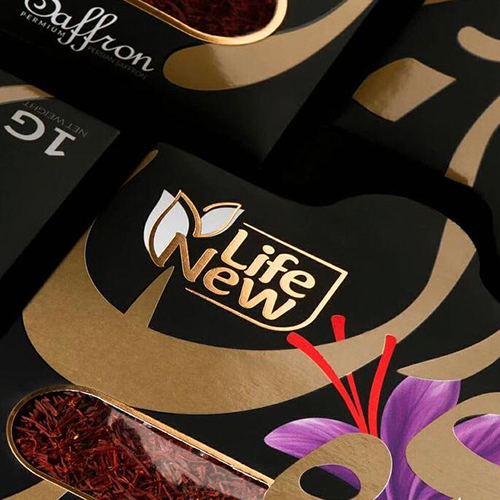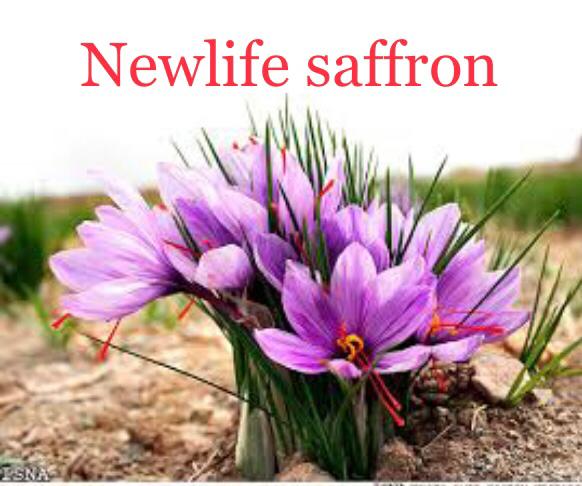
SAFFRON THE KING OF SPICES
Saffron, the world’s most expensive spice, has been the subject of numerous scientific studies that highlight its various health benefits. Saffron is derived from the Crocus sativus flower and contains several bioactive compounds, such as crocin, crocetin, and safranal, which contribute to its positive effects on the body and mood. Below are some key research findings and reasons why saffron is beneficial:
1. Mood Enhancement and Antidepressant Effects
Several studies suggest that saffron can help alleviate symptoms of depression, anxiety, and improve overall mood.
Antidepressant Properties: A meta-analysis published in Human Psychopharmacology (2019) reviewed several randomized controlled trials (RCTs) and concluded that saffron is as effective as some conventional antidepressants like fluoxetine in mild to moderate depression . The spice increases serotonin levels in the brain, which helps in mood regulation.
Reducing Anxiety: A 2016 study found that saffron can reduce anxiety levels in adults. Its compounds, especially safranal and crocin, seem to positively affect neurotransmitter activity and the hypothalamic-pituitary-adrenal (HPA) axis, thereby lowering stress levels.
2. Improvement in Cognitive Function
Saffron has been shown to enhance cognitive function, memory, and protect the brain from age-related cognitive decline.
Alzheimer’s Disease: Studies, including one published in Psychopharmacology (2010), show that saffron may help treat Alzheimer’s disease. The study revealed that saffron extract was as effective as donepezil (a common Alzheimer’s drug) in improving cognitive function in mild-to-moderate Alzheimer’s patients . This could be due to its antioxidant properties, which reduce oxidative stress in the brain.
Memory and Learning: Animal studies have indicated that saffron may enhance learning and memory by reducing oxidative damage in the brain. Crocin, a key compound in saffron, has neuroprotective effects, which could be helpful in preventing neurodegenerative diseases like Parkinson’s and dementia.
3. Anti-Inflammatory and Antioxidant Benefits
Saffron is rich in antioxidants, which help neutralize harmful free radicals in the body and reduce inflammation.
Anti-Inflammatory Properties: Research published in the Journal of Functional Foods (2016) highlights that crocin in saffron has strong anti-inflammatory properties, helping to reduce chronic inflammation associated with diseases like arthritis, cardiovascular diseases, and even cancer.
Antioxidant Activity: Saffron’s antioxidant content helps prevent oxidative stress, which plays a role in aging and the development of chronic diseases. By scavenging free radicals, saffron helps protect cells from damage and slows down the aging process of both skin and internal organs .
4. Heart Health
Saffron can positively affect cardiovascular health due to its antioxidant and anti-inflammatory properties.
Blood Pressure and Cholesterol: Saffron has been shown to lower high blood pressure and cholesterol levels. A study published in Phytomedicine (2007) found that saffron helped reduce LDL cholesterol and blood pressure in patients, helping to protect against atherosclerosis (hardening of the arteries).
Improved Circulation: Saffron contains crocetin, which improves oxygen distribution throughout the body and helps improve blood flow. This may reduce the risk of cardiovascular events like strokes and heart attacks.
5. Anticancer Properties
Several preliminary studies indicate that saffron may have cancer-fighting potential due to its ability to inhibit the growth of cancerous cells.
Inhibition of Tumor Growth: Research published in Cancer Letters (2008) demonstrated that crocin and crocetin in saffron can inhibit the growth of various cancer cells, including those from breast, lung, and colorectal cancers. These compounds work by inducing apoptosis (programmed cell death) in cancerous cells, while not harming normal cells .
6. Weight Loss and Metabolic Health
Saffron can also aid in weight loss and improve metabolic health.
Appetite Control: A 2010 study published in Nutrition Research revealed that saffron supplementation reduced snacking and increased satiety, leading to weight loss. This is thought to be linked to its mood-enhancing effects, as emotional eating is often a driver of weight gain.
Metabolic Benefits: Saffron’s anti-inflammatory and antioxidant properties can also improve insulin sensitivity, which is important for metabolic health. This may benefit people with type 2 diabetes or metabolic syndrome by stabilizing blood sugar levels.
7. Menstrual and Sexual Health
Saffron has been traditionally used to help with various aspects of reproductive health, including PMS symptoms and sexual function.
Menstrual Health: Saffron can help alleviate symptoms of premenstrual syndrome (PMS), such as mood swings, irritability, and pain. A 2008 study published in the BJOG (British Journal of Obstetrics and Gynaecology) found that saffron significantly reduced PMS symptoms in women who took the extract during their menstrual cycles.
Sexual Health: Another study found that saffron can help improve sexual function, particularly in women suffering from sexual dysfunction as a result of antidepressant use. Additionally, some research points to saffron’s ability to improve sperm quality and motility in men, contributing to reproductive health.
8. Skin Health
Saffron’s antioxidant and anti-inflammatory properties also extend to skin care, helping to improve complexion, reduce acne, and promote healthy aging.
Brightening Effect: Saffron is often used in traditional beauty remedies due to its ability to brighten the skin and reduce pigmentation.
Anti-Aging: Saffron’s antioxidant properties help protect the skin from UV radiation and pollution, which can lead to premature aging. Studies have shown that saffron can reduce fine lines, wrinkles, and dark spots, making the skin look more youthful.
—
Why we should use Saffron?
Saffron offers a range of scientifically supported benefits, making it a valuable addition to a healthy diet and lifestyle. From improving mood and cognitive function to supporting heart health and aiding in weight management, saffron has versatile health applications. Additionally, its antioxidant properties make it a powerful anti-aging agent both for internal health and skin care. The combination of its unique bioactive compounds, such as crocin, crocetin, and safranal, gives saffron its medicinal properties, making it a natural supplement with minimal side effects.

About us
Newlife is an internationally famous saffron brand. We are specializing in exporting Iranian saffron with premium-quality to any destination round the globe. For each and every of your orders, we track our parcel to be ensured that our saffron reaches our costumers in the shortest possible time. Sourced from the finest regions of Iran, our saffron is carefully handled to preserve its superior quality.
At Newlife, we are committed to providing saffron in all varieties, ensuring that our customers receive the best possible product suitable for their specific requirements. Whether you are a wholesaler, distributor, or retailer, we deliver saffron that suits your needs with the highest standards of quality and care.


